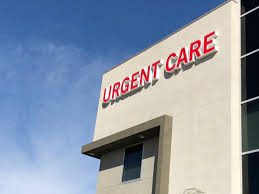In recent years, the healthcare landscape has seen significant changes. One of the most impactful developments is the rise of urgent care clinics. These facilities have rapidly grown in popularity, offering patients quick, convenient, and cost-effective alternatives to traditional hospital emergency rooms and primary care visits. With flexible hours, minimal wait times, and walk-in services, urgent care clinics are meeting the needs of patients in ways that were once impossible. This article explores how urgent care clinics are reshaping modern healthcare by improving access, reducing costs, and delivering timely medical attention.
Understanding Urgent Care Clinics
What Is an Urgent Care Clinic?

Urgent care clinics are medical facilities that provide immediate, non-emergency treatment for illnesses and injuries. They fill the gap between primary care physicians and emergency rooms, helping people who need prompt attention but whose conditions are not life-threatening. Common treatments include care for colds, flu, sprains, minor fractures, infections, cuts, burns, and more.
How They Differ from Emergency Rooms and Primary Care
- Urgent Care vs. ER: Urgent care is ideal for non-life-threatening situations, whereas the ER handles severe or life-threatening emergencies.
- Urgent Care vs. Primary Care: Primary care physicians focus on long-term health and preventive care, while urgent care offers walk-in services for immediate, short-term medical needs.
The Growth of Urgent Care Clinics
Rising Demand for Convenient Healthcare
The fast-paced nature of modern life demands quicker solutions, and healthcare is no exception. Patients increasingly seek medical help on weekends, evenings, and holidays—times when traditional doctors may not be available.
Statistics and Trends
- According to the Urgent Care Association, there are over 10,000 urgent care centers in the U.S.
- Visits to urgent care clinics have increased by more than 120% in the last decade.
- More than 89 million patient visits occur annually at urgent care centers in the U.S.
Advantages of Urgent Care Clinics

Faster Access to Medical Attention
Urgent care clinics typically have shorter wait times compared to hospital ERs. Most patients are seen within 15 to 30 minutes, whereas ER visits can take hours.
Extended Hours and Walk-In Services
Most urgent care centers offer evening and weekend hours, and many are open 7 days a week. This flexibility is crucial for patients who work full-time or face sudden health issues after normal office hours.
Cost-Effective Healthcare
Urgent care services are often more affordable than ER visits. For example:
- Average ER visit cost: $1,300+
- Average urgent care visit: $100–$200
This makes urgent care an attractive option for uninsured individuals or those with high-deductible insurance plans.
High-Quality Medical Staff
Urgent care clinics are staffed by licensed physicians, nurse practitioners, physician assistants, and other certified professionals. Many have experience in emergency medicine or family healthcare.
Comprehensive Services
Many urgent care centers now offer:
- Lab testing and diagnostics
- X-rays and imaging
- Vaccinations
- Physical exams
- COVID-19 testing
- Occupational medicine services
How Urgent Care Clinics Improve the Healthcare System

Reducing Pressure on Emergency Rooms
By diverting non-emergency cases to urgent care, hospitals can focus on critical patients. This reduces overcrowding in ERs and improves overall efficiency.
Enhancing Public Health
With services like vaccinations, flu shots, and COVID testing, urgent care centers play an essential role in disease prevention and community health.
Bridging the Gap in Rural and Underserved Areas
Urgent care clinics often serve rural or suburban communities where hospital access is limited. This ensures more people receive timely care close to home.
Supporting Employers and Occupational Health
Many centers provide work-related medical services such as:
- Drug testing
- Injury treatment
- Pre-employment physicals
- Workers’ compensation support
This reduces downtime for employees and helps businesses manage health compliance.
The Role of Technology in Urgent Care Clinics
Digital Check-Ins and Appointment Booking
Modern urgent care clinics leverage digital tools to improve patient experience. Many offer:
- Online booking
- Mobile check-ins
- Telehealth services
- Real-time wait time updates
Electronic Health Records (EHR)
Clinics use integrated EHR systems to:
- Maintain accurate patient histories
- Share information with specialists
- Avoid duplication of tests
- Improve coordination of care
Telemedicine Services
Some urgent care providers now offer telehealth consultations for non-urgent conditions like rashes, mild infections, and follow-up care. This expands access and minimizes in-person exposure.
Patient Experiences and Satisfaction

High Satisfaction Rates
Patients consistently report positive experiences due to:
- Short wait times
- Friendly staff
- Transparent pricing
- Clean and accessible facilities
Real-Life Testimonials
Many patients prefer urgent care for:
- Immediate treatment for a child’s fever
- Sports injuries or sprains on weekends
- Minor burns or allergic reactions that don’t warrant an ER visit
Challenges Facing Urgent Care Clinics
Insurance and Reimbursement Issues
While many clinics accept insurance, reimbursement rates can vary. Patients may be unsure of their coverage, leading to surprise bills or confusion.
Continuity of Care
Since urgent care visits are typically one-off treatments, ensuring follow-up with a primary care doctor can be challenging. However, many clinics now provide summaries or referrals to bridge this gap.
Competition and Oversaturation
In urban areas, multiple clinics may compete for the same patient base, creating financial pressure. Ensuring consistent quality of care is vital for maintaining trust and long-term success.
The Future of Urgent Care in Healthcare
Integration with Broader Healthcare Networks
More urgent care clinics are affiliating with hospitals and health systems to:
- Share data
- Refer patients to specialists
- Offer coordinated care
Expansion of Services
Expect to see more clinics providing:
- Mental health support
- Chronic disease management
- Preventive screenings
- Wellness programs
Rise of Hybrid Models
Some providers are blending urgent care, primary care, and virtual visits into one seamless patient experience—making care more accessible and comprehensive.
Also Read : Strategies To Bypass The Medicaid 5-Year Lookback Requirement
Conclusion
Urgent care clinics have become a cornerstone of modern healthcare by offering fast, affordable, and accessible medical services. Their ability to provide high-quality treatment without the long waits and high costs associated with emergency rooms has revolutionized how people approach their health. As technology continues to enhance efficiency and as demand for flexible care grows, urgent care clinics will play an even larger role in shaping a responsive and inclusive healthcare system. For millions of patients, urgent care isn’t just a convenience—it’s a necessity that continues to bridge the gap in care delivery.
FAQs
What conditions are treated at urgent care clinics?
Urgent care clinics treat non-life-threatening conditions like flu, colds, infections, sprains, cuts, burns, allergic reactions, and minor fractures.
Do I need an appointment for urgent care?
No. Most urgent care centers accept walk-ins, though some offer online appointment options to reduce wait times.
Is urgent care more affordable than the emergency room?
Yes. Urgent care visits are typically much cheaper than ER visits and are often covered by insurance.
Can urgent care clinics handle children’s health issues?
Absolutely. Many clinics are equipped to treat children and offer pediatric care for common illnesses and injuries.
Will my primary care doctor know about my urgent care visit?
If the clinic uses shared EHR systems or you request a summary be sent, your primary care provider can be updated on your visit.




